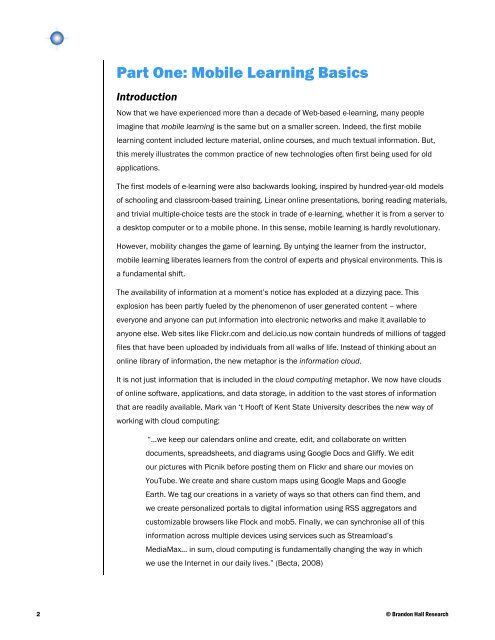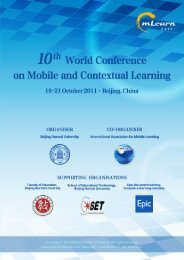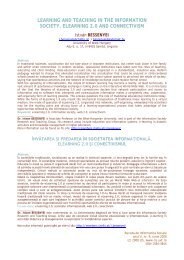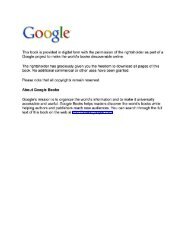Do not reproduce - Connected-Inge
Do not reproduce - Connected-Inge
Do not reproduce - Connected-Inge
Create successful ePaper yourself
Turn your PDF publications into a flip-book with our unique Google optimized e-Paper software.
Part One: Mobile Learning Basics<br />
Introduction<br />
Now that we have experienced more than a decade of Web-based e-learning, many people<br />
imagine that mobile learning is the same but on a smaller screen. Indeed, the first mobile<br />
learning content included lecture material, online courses, and much textual information. But,<br />
this merely illustrates the common practice of new technologies often first being used for old<br />
applications.<br />
The first models of e-learning were also backwards looking, inspired by hundred-year-old models<br />
of schooling and classroom-based training. Linear online presentations, boring reading materials,<br />
and trivial multiple-choice tests are the stock in trade of e-learning, whether it is from a server to<br />
a desktop computer or to a mobile phone. In this sense, mobile learning is hardly revolutionary.<br />
However, mobility changes the game of learning. By untying the learner from the instructor,<br />
mobile learning liberates learners from the control of experts and physical environments. This is<br />
a fundamental shift.<br />
The availability of information at a moment’s <strong>not</strong>ice has exploded at a dizzying pace. This<br />
explosion has been partly fueled by the phenomenon of user generated content – where<br />
everyone and anyone can put information into electronic networks and make it available to<br />
anyone else. Web sites like Flickr.com and del.icio.us now contain hundreds of millions of tagged<br />
files that have been uploaded by individuals from all walks of life. Instead of thinking about an<br />
online library of information, the new metaphor is the information cloud.<br />
It is <strong>not</strong> just information that is included in the cloud computing metaphor. We now have clouds<br />
of online software, applications, and data storage, in addition to the vast stores of information<br />
that are readily available. Mark van ‘t Hooft of Kent State University describes the new way of<br />
working with cloud computing:<br />
“…we keep our calendars online and create, edit, and collaborate on written<br />
documents, spreadsheets, and diagrams using Google <strong>Do</strong>cs and Gliffy. We edit<br />
our pictures with Picnik before posting them on Flickr and share our movies on<br />
YouTube. We create and share custom maps using Google Maps and Google<br />
Earth. We tag our creations in a variety of ways so that others can find them, and<br />
we create personalized portals to digital information using RSS aggregators and<br />
customizable browsers like Flock and mob5. Finally, we can synchronise all of this<br />
information across multiple devices using services such as Streamload’s<br />
MediaMax… in sum, cloud computing is fundamentally changing the way in which<br />
we use the Internet in our daily lives.” (Becta, 2008)<br />
2 © Brandon Hall Research





